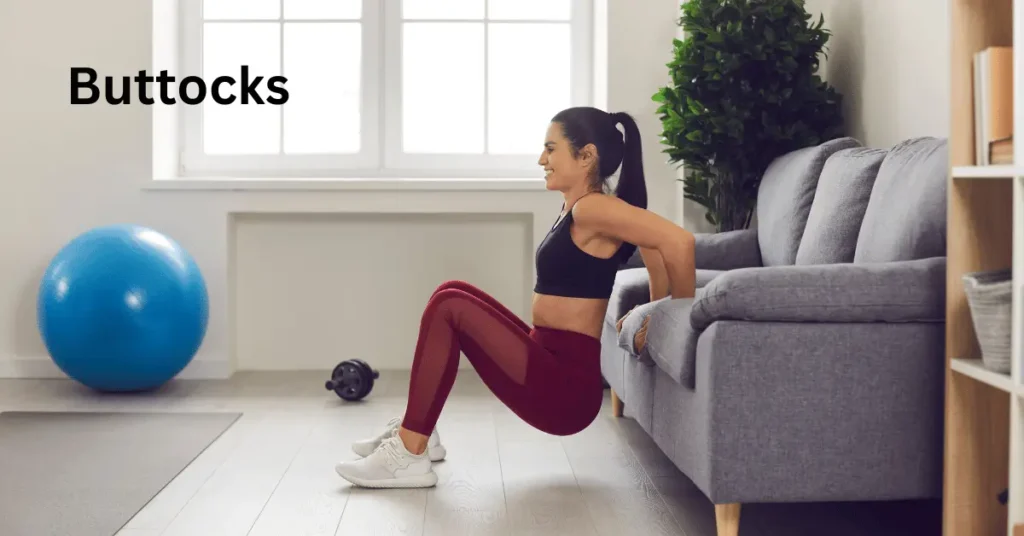AAS Meaning in the Body

When we talk about the “AAS meaning in the body,” many of us might wonder what exactly this term refers to.
Well, “AAS” is simply a term for the fleshy part of the human body that you sit on—yes, your buttocks! It’s an important and often talked about part of the body, but it’s not always clear what the term “AAS” means.
In this article, we’ll break it down for you, explain its meaning, significance, and dive into the history and function of this part of your body.
Whether you’re curious about its role in your health or just want to understand it better, this post will give you all the details in a simple, straightforward way.
What Does “AAS” Mean?
When we refer to “AAS” in the body, we are talking about the fleshy area that forms the lower part of your back, on either side of your pelvis.
This is commonly known as the buttocks, and it plays a key role in both our appearance and physical function.
The “AAS” is made up of a combination of muscle and fat tissue, with the most prominent muscle being the gluteus maximus, the largest muscle in the human body.
Beneath the surface, there are also other muscles such as the gluteus medius and gluteus minimus, which help with movement and stability.
The term “AAS” specifically refers to the soft, padded part that you sit on, providing cushioning and support.
These muscles and tissues not only help with sitting comfortably, but they also support standing, walking, running, and bending.
In fact, the buttocks are essential for many everyday movements because they stabilize the pelvis and assist in the movement of your legs.
In addition to its functional role, the buttocks also have aesthetic importance in many cultures.
People often focus on developing this area through exercise for various reasons, from improving posture to enhancing physical appearance.
So, when we talk about the “meaning of AAS in the body,” we’re referring to this vital, multi-functional part of our anatomy that plays a role in mobility, posture, and comfort.
Definition of the Meaning of AAS in the Body
The meaning of AAS in the body refers to the fleshy, muscular area located at the lower back, above the thighs, commonly known as the buttocks.
It is made up of muscle tissue, primarily the gluteus maximus, and fat tissue that provides cushioning and support.
This area plays an important role in various body functions, including posture, mobility, and overall movement.
The term “AAS” is a shorthand for this region, especially in discussions related to fitness or anatomy, where people focus on its structural and functional importance.
It serves not just as a cushion when you sit but also contributes to activities like standing, walking, climbing stairs, and running.
Examples of the Meaning of AAS in the Body
- Sitting Comfortably: The most common example of the role of AAS is when you sit down. The fleshy part of the body that touches the chair or surface you sit on is made up of soft tissue and fat. This provides a cushion, making sitting more comfortable and reducing pressure on the bones and muscles underneath.
- Movement and Posture: The gluteus maximus, one of the key muscles in the AAS, plays a crucial role in stabilizing your posture. When standing or walking, these muscles help stabilize your pelvis and keep your body upright. They also aid in moving your thighs during walking, running, and other activities.
- Fitness and Exercise: People often refer to the AAS in fitness contexts, particularly when discussing exercises to strengthen or shape the gluteal muscles. For example, squats and lunges are exercises that target the glutes, helping to tone and define the AAS region. A stronger AAS supports better posture, balance, and overall lower body strength.
- Cultural Influence and Aesthetics: In many cultures, a well-developed and toned AAS is considered a symbol of health and attractiveness. Fitness enthusiasts often focus on exercises to enhance the appearance of this area, such as hip thrusts, glute bridges, and squats, all of which target the gluteal muscles. This has led to a rise in discussions and trends related to the “perfect” AAS, contributing to its cultural significance.
Word Origin of AAS in the Body

The term “AAS” as it refers to the fleshy part of the body that you sit on has a somewhat modern and colloquial feel.
However, understanding the origin of words related to this body part involves a look back into linguistic and anatomical history.
The word “AAS” itself is not a standard term in classical anatomy or medical terminology. It is more of a shorthand or informal expression used to describe the buttocks or gluteal region.
While “AAS” may be used in some contexts, particularly in modern fitness discussions, it is not a word you would typically find in medical dictionaries or textbooks.
Let’s break it down:
- “Buttocks”: The word “buttocks” itself comes from the Middle English word “buttok” (or “buttock”), which appeared around the 14th century. It is believed to have originated from the Old English term “buttuc,” meaning “a small piece” or “a portion.” This likely referred to the rounded shape of the buttocks. The term evolved over time to specifically describe the fleshy parts of the body people sit on.
- “Gluteus”: The more scientific name for the muscles of the AAS is derived from “gluteus,” which is Latin in origin. The word “gluteus” comes from the Greek word “gloutos,” meaning “buttocks” or “rump.” In anatomical terms, the gluteus maximus, gluteus medius, and gluteus minimus refer to the primary muscles located in this region. These names were formalized in the 16th and 17th centuries when modern medical terminology was being developed and Latin and Greek were commonly used.
The Shift to Informal Terms: The term “AAS” seems to be a more informal and possibly internet-driven abbreviation, gaining popularity in conversations around fitness, health, and sometimes humor.
It is a playful way to refer to the “buttocks” or “glutes,” likely due to its ease of use and contemporary appeal.
It is not commonly used in scientific contexts but has become part of modern language when discussing fitness goals or body image.
So, while “AAS” itself does not have a centuries-old etymology like other medical terms, its roots are tied to the longstanding linguistic evolution of the words for the buttocks, with influences from Old English and Latin.
The abbreviation “AAS” can be seen as a contemporary, shorthand form of the more widely used term “buttocks” or “glutes.”
FAQs
What does AAS stand for in the body?
AAS stands for the fleshy part of the human body that you sit on, commonly known as the buttocks. The term is used informally to refer to this region, which is made up of muscles (mainly the gluteus maximus) and fat. It plays a key role in supporting posture, aiding movement, and providing cushioning when sitting.
Why are the buttocks called AAS?
The term “AAS” is a shorthand or colloquial expression used to describe the buttocks. While not a formal anatomical term, it has gained popularity in casual discussions, especially in the context of fitness and body image. It’s a simpler and sometimes more playful way to refer to the buttocks or gluteal region.
What are the muscles that make up the AAS?
The primary muscles in the AAS are the gluteus maximus, gluteus medius, and gluteus minimus. The gluteus maximus is the largest and most well-known of these muscles, responsible for much of the shape and function of the buttocks. These muscles are crucial for movements such as walking, running, squatting, and climbing stairs.
Can exercises help shape or strengthen the AAS?
Yes! Various exercises specifically target the glute muscles and can help shape, strengthen, and tone the AAS. Exercises like squats, lunges, hip thrusts, and glute bridges are popular for building strength in the buttocks. A strong, toned AAS contributes to better posture, mobility, and even prevents certain lower back problems.
What role does the AAS play in body posture and movement?
The AAS, especially the gluteus maximus, plays an essential role in supporting the pelvis, maintaining an upright posture, and enabling smooth movement. The glute muscles help stabilize the lower body, allowing for efficient walking, running, and climbing. A strong AAS is vital for maintaining proper posture and reducing strain on other parts of the body, particularly the lower back.
Conclusion
In conclusion, the meaning of AAS in the body refers to the fleshy part that we sit on—the buttocks.
This area is made up of muscles like the gluteus maximus and fat, and it plays an important role in our posture, movement, and comfort.
Whether for everyday tasks or in fitness, the AAS is crucial for our overall health and functionality.
From supporting our body when we sit to helping us move, it’s clear that this part of the body deserves attention and care.
So, the next time you think about the AAS, remember its significance and how it helps you stay active and strong!
Extra Points
- Cultural Importance: The AAS has a strong cultural significance in many parts of the world. In some cultures, a well-shaped and toned buttocks is seen as a symbol of beauty and health. This has led to the popularity of exercises and diets focused on enhancing the appearance of the AAS.
- Health Benefits of Strong Glutes: Having strong glute muscles isn’t just about appearance—it’s about health! Strong glutes can help prevent injuries, improve athletic performance, and even reduce lower back pain. This is why many trainers and experts emphasize glute exercises in fitness routines.
- Sitting and Health: While the AAS provides comfort when sitting, it’s important to balance sitting with movement. Sitting for long periods without moving can lead to muscle stiffness and poor posture. It’s a good idea to stand up, stretch, or walk around periodically to keep the glute muscles active and healthy.
- The Role in Balance: The gluteus muscles are also essential for maintaining balance and stability, particularly when standing or walking. They help keep the pelvis stable, allowing for smoother and more controlled movements.
- Fun Fact: The gluteus maximus is one of the largest muscles in the human body! It’s not just big; it’s also one of the strongest, helping you perform powerful movements like running or jumping.